( – promoted by navajo)
About 11,000 years ago, the North American climate changed: it became warmer (by about 13 degrees Fahrenheit) and drier. There was also an increase in the seasonal extremes: summers were warmer and winters were colder. The large Pleistocene mammals such as the mammoth, which had once dominated the landscape, became scarcer. By 8,000 years ago many of the megafauna had become extinct. Extinction is a natural evolutionary development. For Indian people, this change meant that their cultures had to change so that they could adapt to the new environment. One cultural adaptation to this new environment was the Folsom cultural complex.
The Folsom cultural complex takes its name from an archaeological site in Folsom, New Mexico in which a spear point was found embedded in an ancient bison. Geographically, Folsom culture spread eastward from the Rocky Mountains across the Great Plains. It extended from North Dakota to Mexico. It seems to be centered along the eastern slopes of the Rocky Mountains. There are, however, some Folsom sites west of the Rocky Mountains, particularly in Idaho.
The lifestyle of the Folsom people appears to have been centered around bison hunting. The people lived in small bands-perhaps less than 20 members during much of the year-and these small bands would periodically join together for trade and socializing. During much of the year they travelled in a systematic fashion to different resource areas on the Great Plains.
The Folsom hunters hunted Bison antiquus which were several hundred pounds larger and carried horns each about 12 inches (30 centimeters) longer than those on today’s Bison bison. Folsom hunters skillfully used the natural topographic features of the land, such as arroyos, to trap the buffalo in large numbers. As successful buffalo hunters, the Folsom people had a great deal of knowledge not only about the buffalo itself, but also about the overall environment.
The skeleton of a Bison antiquus is shown below:

Folsom buffalo kills generally involved less than 30 animals and most frequently happened in the winter. It was not uncommon for the hunters to take choice cuts from the animal and then freeze them to keep them edible until warm weather arrived.
Bison butchering often took place at special processing sites next to the kill sites. Here the meat was prepared for transport by cutting it into large packages. In some instances, the tibia and the femur were removed to reduce the weight.
The Folsom people also hunted other animals such as mountain sheep, elk, deer, marmot, and cottontail rabbit. At the Lindenmeier site in Colorado archaeologists found that the Folsom people were butchering buffalo as well as other animals. The camp space was divided into different activity areas for manufacturing various items from bone, including jewelry. Some of the obsidian used for the stone tools at the Lindenmeier site were originally quarried in Yellowstone National Park, about 350 miles to the north. Other obsidian was quarried in central New Mexico, about 350 miles to the south. This had led some archaeologists to suggest that the site was used by two different bands who rendezvoused periodically at the site.
The Lindenmeier site is shown below:
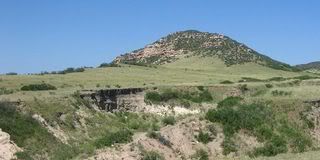
In the Central Rio Grande Valley of New Mexico Folsom campsites were located on ridges overlooking water holes. The Folsom hunters would apparently surprise the animals as they came to drink from the water holes.
At a site near Midland, Texas, which is dated at 8900 BCE, Folsom people were using small beads made from bone – 1.6 mm in diameter as decorative items. The quality of the bone beads was as fine as the best hishe beads (diskshaped shell beads with a single hole in the middle) created by contemporary Indian bead makers using modern equipment.
Folsom people are known for their fluted spear points which were smaller and more delicate than the earlier Clovis points. The Folsom projectile point is recognized throughout the Americas for its unique design, exceptional workmanship, and the high-quality raw materials from which they are manufactured. On the other hand, their stone knives hide scrapers, and butchering tools were not as finely made as were their projectile points.
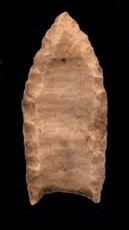
In addition to the atlatl (a spear-thrower which used a spear tipped with the Folsom point), the Folsom tool kit included ultra-thin bifacial knives, flake knives, gravers, spokeshaves, drills, end and side scrapers, chippers, and abrading stones. They used various mineral pigments and therefore had pigment grinding stones.
The Folsom tool kit was not limited to stone: the sophisticated toolmaking exhibited in their lithic work also extended into their work with wood and bone. They made eyed-bone needles and they decorated bone with fine incised lines. This is also an indication that the people were making tailored clothing.
By about 8000 BCE, Folsom culture was evolving into more localized hunting and gathering adaptations.
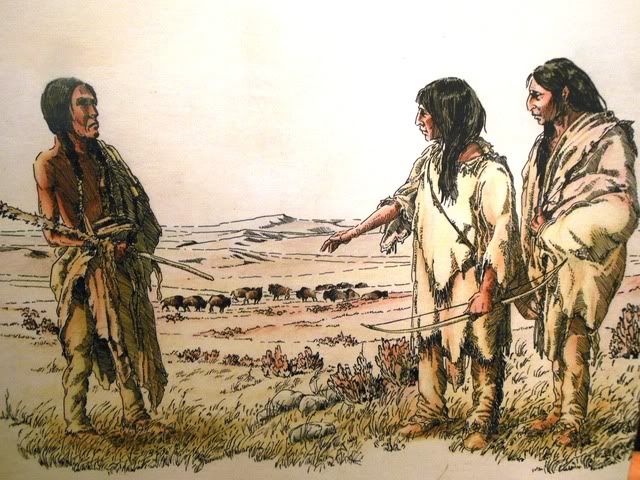
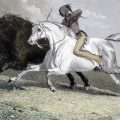
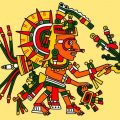
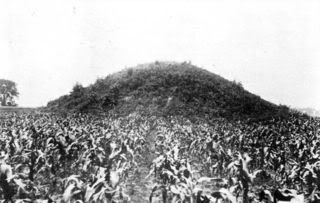
Leave a Reply